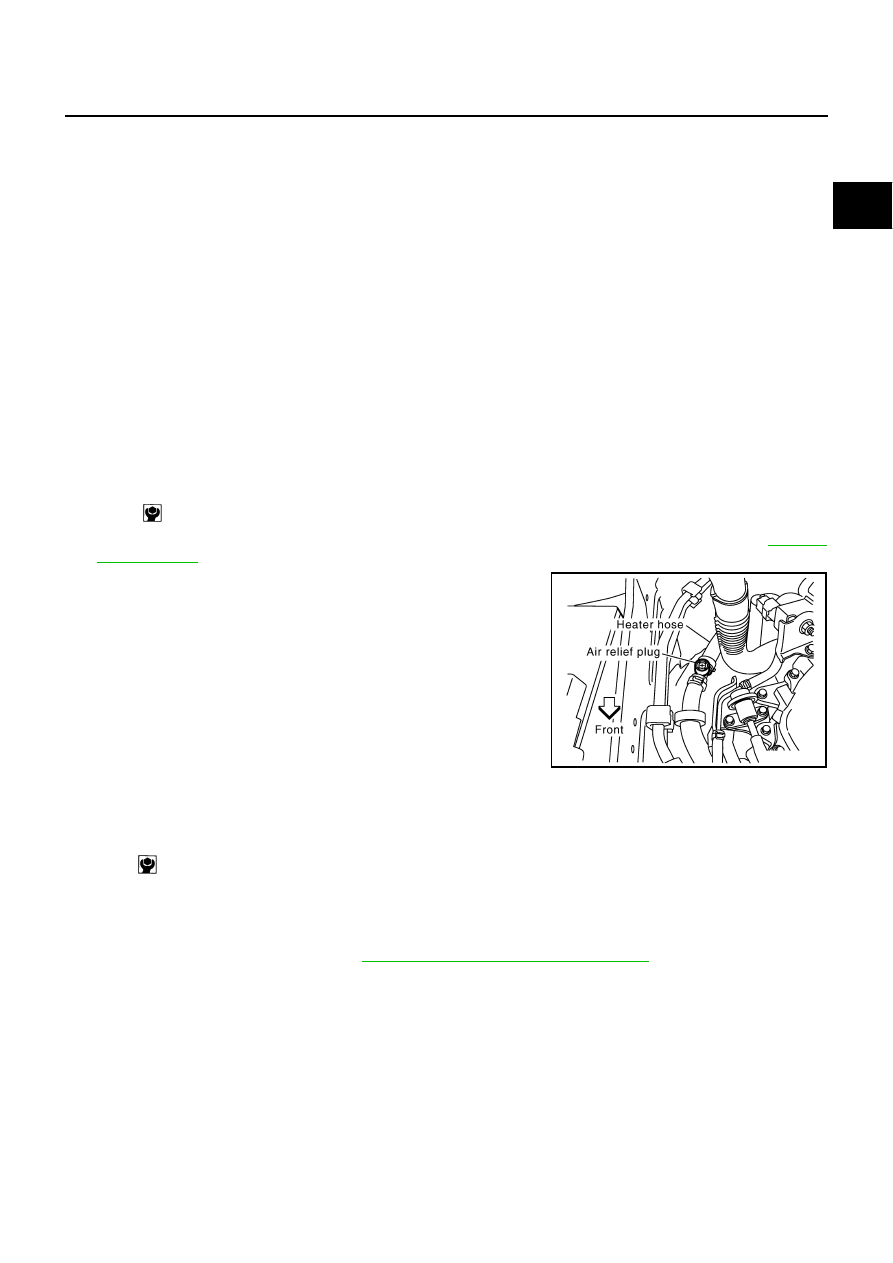Infiniti M35/M45 Y50. Manual - part 343

ENGINE COOLANT
CO-13
[VQ35DE]
C
D
E
F
G
H
I
J
K
L
M
A
CO
7.
Stop the engine and cool down to less than approximately 50
°
C (122
°
F).
●
Cool down using fan to reduce the time.
●
If necessary, refill radiator up to filler neck with engine coolant.
8.
Refill reservoir tank to “MAX” level line with engine coolant.
9.
Repeat steps 4 through 7 two or more times with radiator cap installed until engine coolant level no longer
drops.
10. Check cooling system for leaks with engine running.
11. Warm up the engine, and check for sound of engine coolant flow while running engine from idle up to
3,000 rpm with heater temperature controller set at several position between “COOL” and “WARM”.
●
Sound may be noticeable at heater unit.
12. Repeat step 11 three times.
13. If sound is heard, bleed air from cooling system by repeating step 4 through 7 until engine coolant level no
longer drops.
FLUSHING COOLING SYSTEM
1.
Install reservoir tank if removed, and radiator drain plug.
CAUTION:
Be sure to clean drain plug and install with new O-ring.
If water drain plugs on cylinder block are removed, close and tighten them. Refer to
2.
Remove air relief plug on heater hose.
3.
Fill radiator with water until water spills from the air relief hole, then close air relief plug. Fill radiator and
reservoir tank with water and reinstall radiator cap.
4.
Run the engine and warm it up to normal operating temperature.
5.
Rev the engine two or three times under no-load.
6.
Stop the engine and wait until it cools down.
7.
Drain water from the system. Refer to
CO-11, "DRAINING ENGINE COOLANT"
8.
Repeat steps 1 through 7 until clear water begins to drain from radiator.
Radiator drain plug:
: 1.2 N·m (0.12 kg-m, 11 in-lb)
SBIA0445E
Air relief plug:
: 1.2 N·m (0.12 kg-m, 11 in-lb)